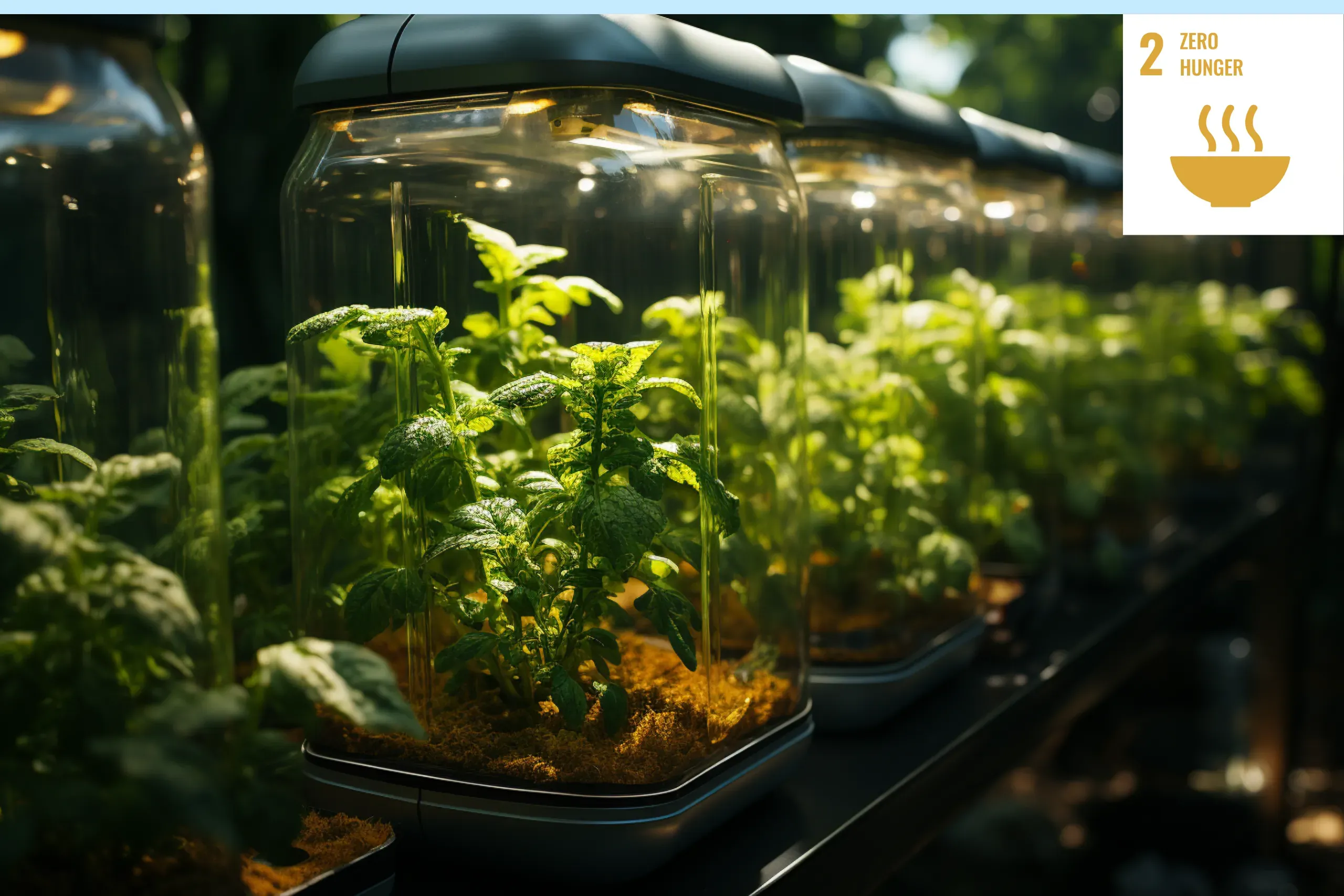Amid the backdrop of global challenges, the United Nations' Sustainable Development Goals (SDGs) emerged in 2015 as a beacon of hope and collective action.
Seventeen interconnected objectives formed a roadmap to address the world's most pressing issues, spanning poverty, education, gender equality, climate action, and more. With the mission to build a sustainable and inclusive future, these goals symbolize humanity's united front in shaping a better world by 2030.
In pursuit of this mission, Kinfolk embarks on an exploration of Artificial Intelligence's (AI) role in accelerating the realization of the SDGs. Each article series in this journey sheds light on specific SDGs. Series Two dives into the impactful convergence of AI and SDG 2, Zero Hunger.
AI Applications for SDG 2: Zero Hunger
Here are two AI contributions to SDG 2:
Precision Agriculture and Improved Crop Yield: AI-powered precision agriculture is a game-changer for farmers, enabling them to make data-driven decisions that significantly enhance crop yield and resource efficiency.
In real-time, farmers can monitor crucial factors such as soil moisture, nutrient levels, and pest infestations by integrating sensors, drones, and AI algorithms.
These insights allow for precise irrigation, targeted fertilization, and timely intervention, leading to increased productivity and sustainable farming practices. Precision agriculture optimizes resource usage and contributes to global food security while minimizing environmental impact.
Efficient Supply Chain Management for Food Distribution: By increasing distribution effectiveness and minimizing food waste, AI is transforming the management of the food supply chain. Its system examines information from several sources, including inventory levels, market needs, logistics for shipping, and weather conditions.
This real-time analysis enables accurate demand forecasting, facilitating better inventory management and timely transportation of perishable goods.
Additionally, AI-driven predictive analytics help identify potential bottlenecks in the supply chain, allowing for proactive solutions to minimize disruptions and optimize distribution networks.
AI-Driven Innovations for Hunger Eradication
Food Rescue and Redistribution: AI-powered platforms connect surplus food suppliers with food banks and charitable organizations like the Food and Agriculture Organization of the United Nations (FAO) to match excess food with areas of high demand, reducing food waste and ensuring that nutritious meals reach vulnerable populations.
Crop Disease Detection: AI-based image recognition technology empowers farmers to detect crop diseases early and identify specific conditions through image analysis, helping farmers implement targeted interventions, preventing widespread crop losses, and safeguarding food supplies.
Climate-Resilient Agriculture: AI-enabled climate modeling assists farmers in understanding how climate change affects crop production by providing accurate climate predictions, so farmers can adapt their practices and choose climate-resilient crops, bolstering food security.
Here are some inspiring examples of how AI is making a difference in the fight against hunger:
Plantix: Plantix is an AI-powered mobile app that helps farmers diagnose crop diseases and nutrient deficiencies by taking photos of their crops using the app.
The app provides real-time recommendations for appropriate treatments and solutions, enabling farmers to take immediate action and protect their crops.
Plantix empowers farmers to enhance their yields and secure their food supply by minimizing crop losses.
The GrainSense Scanner: This handheld device utilizes AI to measure the nutrient levels of crops in the field. Farmers can quickly analyze grain samples, obtaining essential protein, moisture, and carbohydrate content information.
This data lets farmers understand their crops’ quality and market value by optimizing crop selection and storage, enabling better management of their resources, increasing profitability, and contributing to global food security.
IBM AgroPad: The AI-powered IBM AgroPad assists small-scale farmers in assessing soil and water quality. In analyzing samples, the portable device reveals nutrient levels and contaminants, enabling informed decisions for optimal crop growth and responsible resource usage.
FarmBeats by Microsoft: Microsoft created this AI-based technology to improve agricultural output by combining information from several sources, including satellite photos, weather predictions, and soil sensors. Farmers may gain useful insights from FarmBeats, such as customized irrigation programs, ideal planting periods, and crop health monitoring.
Conclusion
Kinfolk’s exploration of this transformative alliance between AI and SDG 2, Zero Hunger, is quite interesting and illuminating. From our research, we can conclude that through AI's data-driven revelations, vulnerable populations receive targeted interventions, amplifying food security and nurturing sustainable practices.
In this dynamic collaboration, technology is the advocate, transcending boundaries and creating paths toward a world where hunger is eradicated, one insightful algorithm at a time.

